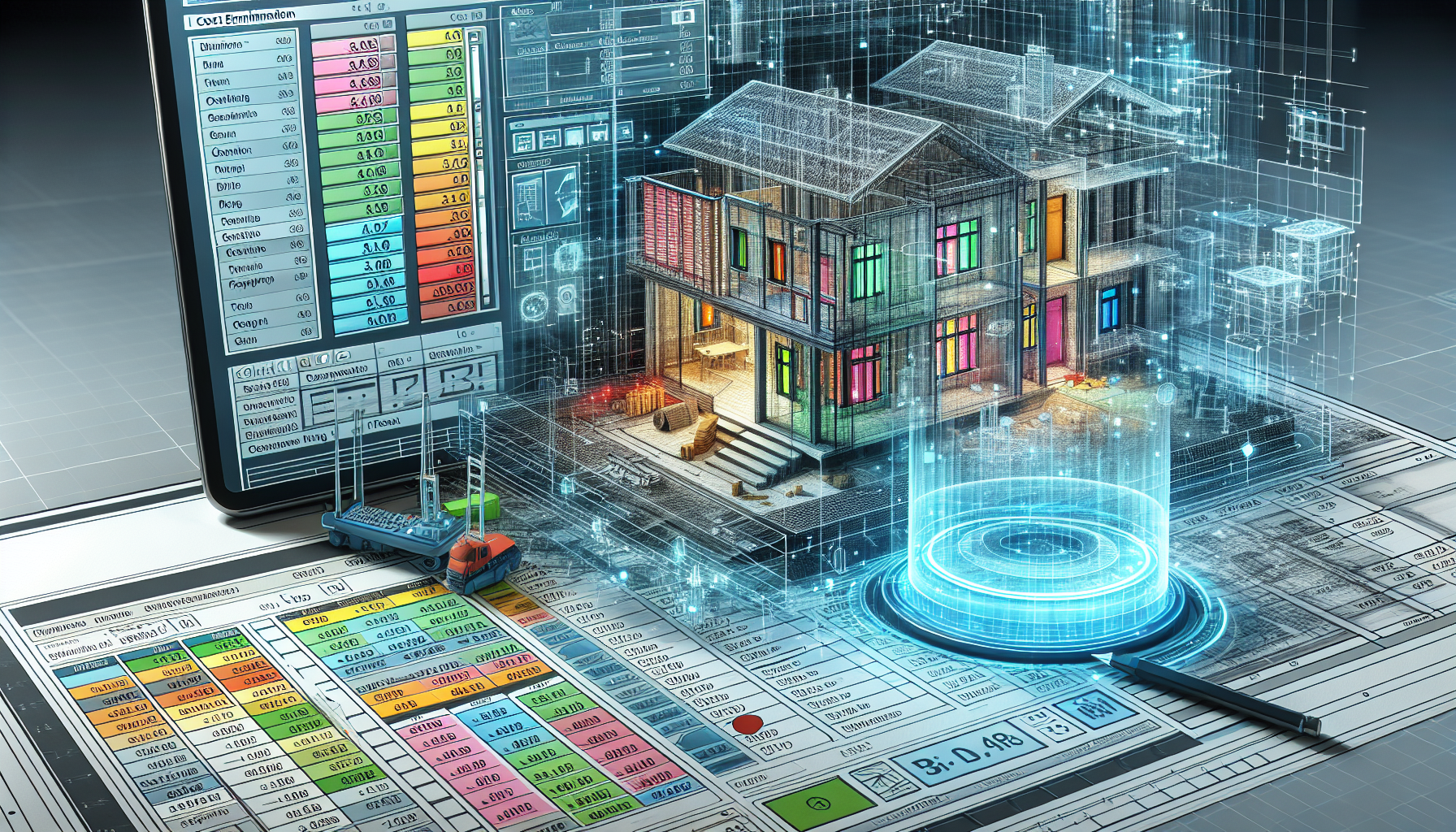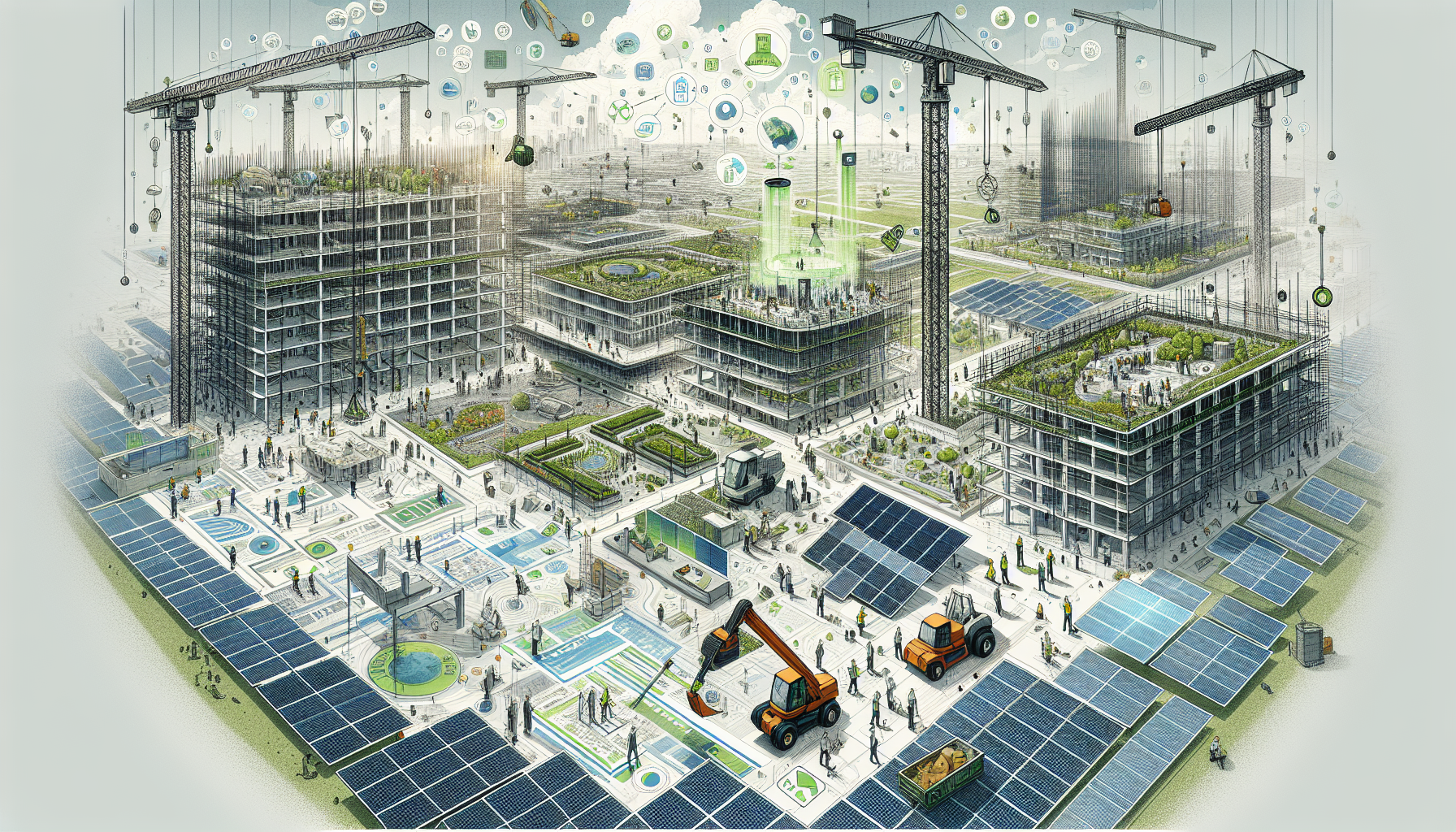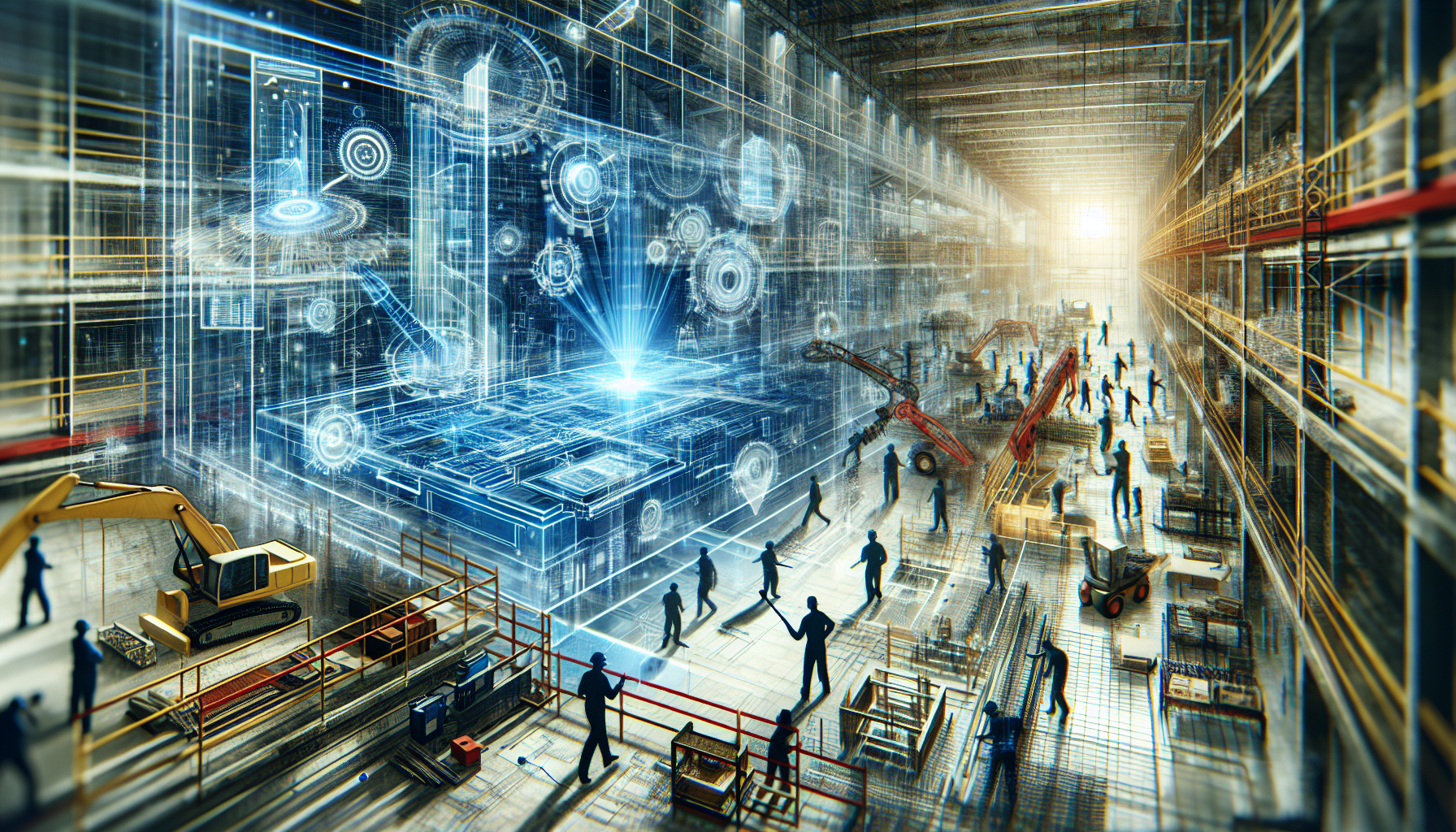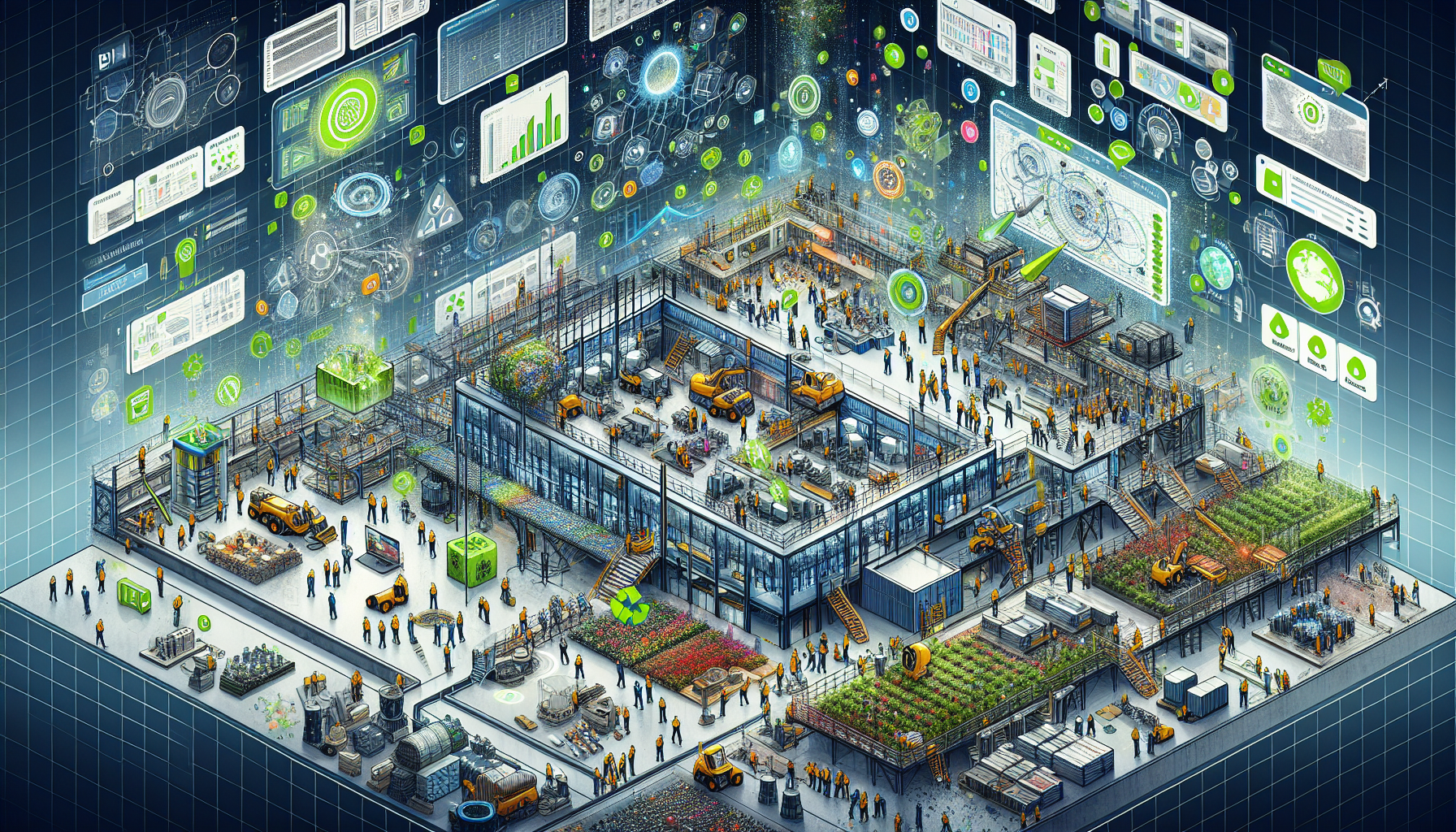Why are industry leaders turning to BIM? With its capacity to streamline construction processes, save costs, and boost productivity, building information modeling stands as a cornerstone of modern construction technology. This article cuts through the jargon to highlight the concrete benefits of BIM, demonstrating its role in project collaboration, budget management, sustainability, and error reduction—all critical elements for the success of today’s construction and design projects.
Key Takeaways
- BIM enhances collaboration in construction by centralizing data, offering real-time updates, and improving decision-making, which leads to higher project efficiency and ROI.
- BIM streamlines cost estimation and budgeting in construction projects by providing accurate material quantities, precise cost estimations, and improving overall project planning, thereby minimizing the risk of budget overruns.
- Beyond construction, BIM promotes sustainable practices and energy efficiency analysis, boosting productivity and reducing errors while playing a crucial role in facility management and the lifecycle of a building.

The Advantages of BIM
1. Enhancing Collaboration and Communication
BIM revolutionizes the construction landscape, enhancing collaboration among project team members and stakeholders. But how exactly does it do this? Simple - by centralizing project data and providing real-time updates, the BIM process ensures that everyone involved is on the same page.
Furthermore, BIM provides a platform for streamlined communication, aiding in the resolution of potential design conflicts before they escalate. This improved decision-making is facilitated by the comprehensive digital models provided by this technology, which offers accurate and timely information crucial for planning and execution.
Centralized Data Management
The essence of BIM lies in its capacity to:
- Consolidate data management.
- Pool data in a single platform.
- Enhance collaborative efforts.
- Provide unmatched data accessibility.
Data in BIM encompasses a wide range, from basic spreadsheets to intricate 3D models. This enables thorough project tracking and management, allowing project teams to stay on top of every detail, every step of the way.
Real-Time Updates
In the ever-changing world of construction, staying current is of utmost importance. BIM makes this easy by facilitating real-time updates. Whether you’re a remote team member or on-site, you can access the latest project data at any given moment.
What’s more, BIM improves project planning by enabling real-time communication and coordinated updates. This not only helps keep projects on budget and on schedule but also offers a real-time perspective on project progress through the use of 4D simulations.
Improved Decision-Making
BIM transforms decision-making from a guessing game into an informed process. The accurate information provided by this method enhances the decision-making process, assisting managers and contractors in optimizing project outcomes.
The benefits of BIM go beyond just providing data; it also optimizes communication and collaboration. This leads to more effective resolution of issues and better decision-making. The result? Significant benefits and cost savings for your construction project.

2. Streamlining Cost Estimation and Budgeting
Budgeting stands as one of the most daunting aspects of any construction project. However, BIM technologies streamline cost estimation and budgeting by providing accurate material quantities, precise cost estimations, and improved project planning.
BIM is a game-changer when it comes to preventing cost overruns. By generating accurate material costs, the risk of going over budget is drastically reduced and allows for more precise project planning. It’s no surprise that many construction companies are adopting BIM and VDC (virtual design and construction) for their projects.
Accurate Material Quantities
Precise material quantification is vital for any construction project. With BIM, this task becomes a breeze. BIM models provide an essential tool in the form of detailed information on building components, ensuring consistency and accuracy in material quantities.
But the advantages don’t stop there; collaborative BIM models reflect the most recent design changes and specifications in the project, ensuring accurate material takeoffs. This results in reduced waste on construction sites, contributing to a more sustainable and cost-effective construction process.
Precise Cost Estimations
In cost estimations, accuracy is paramount. BIM aids this by integrating quantities with cost data, streamlining the cost estimation and budgeting process.
What’s more, BIM offers several additional merits including:
- Minimizing the need for manual calculations, promoting precision and reducing errors.
- Enabling 5D estimating by merging 3D models with cost information, resulting in accurate cost predictions.
- Making the estimation process easier and mitigating the risk of budget overruns.
Improved Project Planning
BIM extends beyond just creating 3D models; it also enhances project planning for a building project. By enabling optimal allocation of design and construction resources, BIM services contribute to enhanced project planning as construction begins.
Real-time data provided by a BIM model is also critical for planning retrofit projects and renovations. This allows for effective management of project costs, ensuring your project stays within budget and on schedule.

3. Optimizing Sustainability and Energy Efficiency
In an era where sustainability is a paramount concern, BIM technology takes the lead. By promoting sustainable construction practices and enabling energy efficiency analysis, BIM and VDC is not only revolutionizing the construction process but also contributing to a greener future.
Sustainable Construction Industry Practices
BIM supports sustainable construction in more ways than one. For starters, it aids in the selection of eco-friendly materials through a Material Information Model (MIM), which assesses the environmental impact of construction materials.
BIM also extends its influence to energy-efficient technologies and the integration of renewable energy solutions. By considering safety aspects in its models, these digital twins ensure that health and well-being are considered alongside environmental concerns. This brings us a step closer to achieving sustainable construction practices.
Energy Efficiency Analysis
BIM is not only about enhancing building quality; it’s about intelligent construction. Through BIM models, energy planning and optimization can be addressed early in the efficient construction process, leading to significant energy savings during the construction phase.
Energy simulations driven by BIM services account for building geometry, material properties, and operational strategies, enabling a thorough analysis of building energy performance. For example, one might use a BIM model to simulate various window or door positions to understand the optimal orientation for admitting the most natural light during ideal times of the day, or to assess which building materials reflect or retain the most the heat. This results in enhanced operational energy efficiency and better overall energy utilization.

4. Boosting Productivity and Reducing Errors
In a highly competitive sector such as the construction industry, improving productivity and minimizing errors can spell the difference between success and failure. BIM offers a solution by automating repetitive tasks, minimizing errors, and reducing rework.
Automation of Repetitive Tasks
Imagine if tedious tasks like quantity takeoffs and object placement could be automated. With BIM, they can be. This not only saves time but also increases efficiency.
Moreover, profitability is significantly improved by systematizing project execution. This reduces time spent on manual, repetitive operations, allowing teams to focus on more strategic tasks.
Minimizing Errors
One of the major benefits of BIM is its capacity to lessen errors. With automated clash detection functionality, conflicts between various building systems can be pinpointed early on, minimizing errors when construction is underway.
Furthermore, BIM helps secure high-quality outputs and ensures fewer modeling errors. This diminishes the amount of rework required, leading to significant cost savings and ROI.
Reducing Rework
Rework is not only expensive; it also drains time. Digital twins reduce rework by ensuring that construction activities align with the design intent, improving work quality and compliance with the building model during the design and construction process.

5. Facility Management and Lifecycle Benefits
BIM extends its benefits beyond just construction; it also impacts:
- Building Lifecycle advantages
- Efficient operations
- Maintenance planning
- Sustainable renovation and deconstruction
Efficient Operations
BIM software supports efficient lifecycle management, aiding the operation and maintenance of building systems for energy optimization and sustainability improvements. In addition, the integration of building information modeling with Computerized Maintenance Management Systems (CMMS) enhances the management of maintenance work orders and supports the effective planning of building renovations by construction professionals.
Maintenance Planning
In the realm of maintenance planning, BIM technology proves to be a revolutionary tool. By creating detailed asset tags and collating related data, this process facilitates better planning and tracking of maintenance.
Furthermore, with comprehensive asset and product data available in BIM, facility managers can develop more effective preventative maintenance programs.
Renovation and Deconstruction
BIM also assists in the effective planning of future renovations, looking forward. By precisely modeling and archiving building elements, these digital twins are essential for resource management and minimizing waste.
Moreover, BIM models provide data on material specifications and installation processes, facilitating the reclaiming of resources during deconstruction for reuse or recycling. This makes BIM technologies a key player in sustainable renovation, deconstruction planning, and construction processes.
Summary
From enhancing collaboration to reducing errors, boosting productivity to optimizing sustainability, it’s clear that BIM is a gamechanger for the construction industry. As we move towards a future where efficiency, accuracy, and sustainability are paramount, the adoption of this technology will undoubtedly be instrumental. So, are you ready to embrace the revolution?
Frequently Asked Questions
How does BIM enhance collaboration and communication in construction projects?
BIM enhances collaboration and communication in construction projects by centralizing data and providing real-time updates, ensuring that all project teams and stakeholders stay connected and informed.
How do BIM models contribute to sustainable construction practices?
BIM contributes to sustainable construction practices by facilitating efficient design optimization, material management, and lifecycle analysis. It enables the identification of sustainable building solutions, reduces waste, and boosts energy efficiency throughout a building's lifecycle.
How does BIM implementation minimize errors in construction projects?
BIM minimizes errors in construction projects by using automated clash detection to identify conflicts between systems at an early stage, reducing the likelihood of errors. This proactive approach reduces rework, enhances accuracy, and improves project outcomes.
How does integrating BIM improve maintenance planning?
BIM improves maintenance planning by enabling the creation of detailed asset tags and organizing related data, which ultimately leads to better planning and tracking of maintenance tasks, efficient resource allocation, and optimizes the longevity of building assets.



